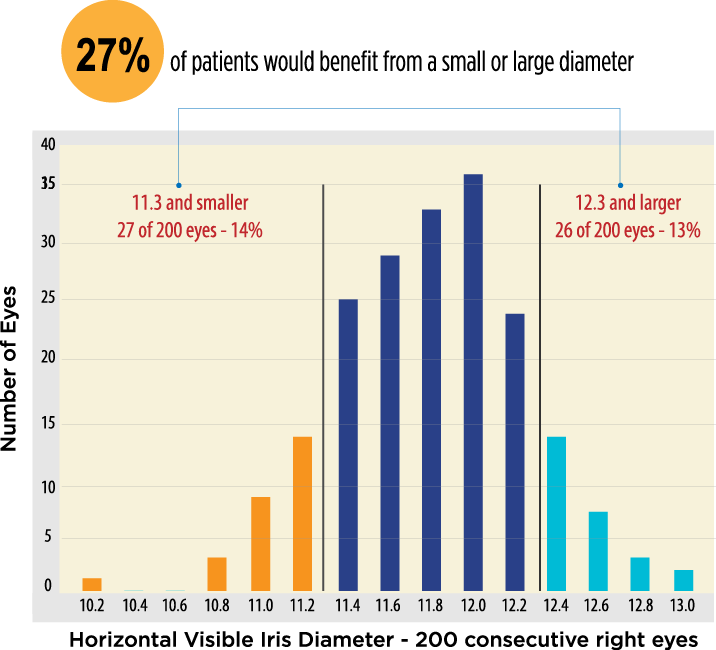material + fit = comfort
Like other things we wear, the best comfort is a combination of the right material and the right fit.
- Non-ionic material resists deposits keeping lenses clear and free of unhealthy protein deposits.
- Naturally hydrophilic – no coating is required for superior comfort.
- Proper DK value ensures good corneal heath.
- Ultra-stable copolymer provides exceptional on-eye stability throughout the entire wearing period.
- 13.6 – for patients who have smaller corneas and lid apertures. A great solution for first time wearers and those that have issues with insertion and removal.
- 14.8 – for patients who have larger corneas and active lifestyles. The larger diameter is more stable on the eye and less likely to decenter or fall out during athletic activities. The larger size also provides full coverage and sits under the lid. Any lid interaction which could cause discomfort from the lens edge is gone.
The number one thing your patients want is outstanding comfort. Now you can give it to them - simply complete the form below for sample lenses or to get started with a diagnostic fit set.
Studies indicate that standard parameters won't work for everyone. To ensure the right fit on your patients, you need small and large diameter options.

Pacific University recently conducted a study on corneal diameter and findings indicate that 27% of contact lens fits fall outside the standard parameters and would benefit from a small or large diameter. This supports our daily, weekly, and bi-weekly modalities that are available in small (13.6) and large (14.8) diameters.
To further substantiate the above findings, we conducted our own internal clinical evaluation of HVID and comfort. Utilizing our account base, more than 450 patients were measured and asked to rate the comfort level of their contact lens. Like Pacific University, our findings showed that 25% of patients fall outside standard parameters. In addition, we found that these 25% of patients had comfort issues. 37% of patients with HVID < 11.3 and 53% of patients with HVID > 12.3 reported a level of discomfort with their contact lenses.